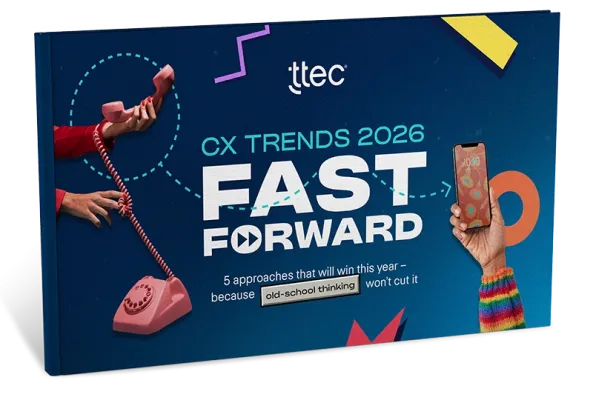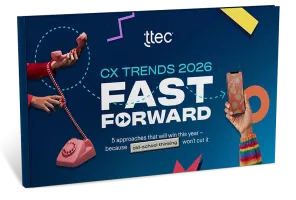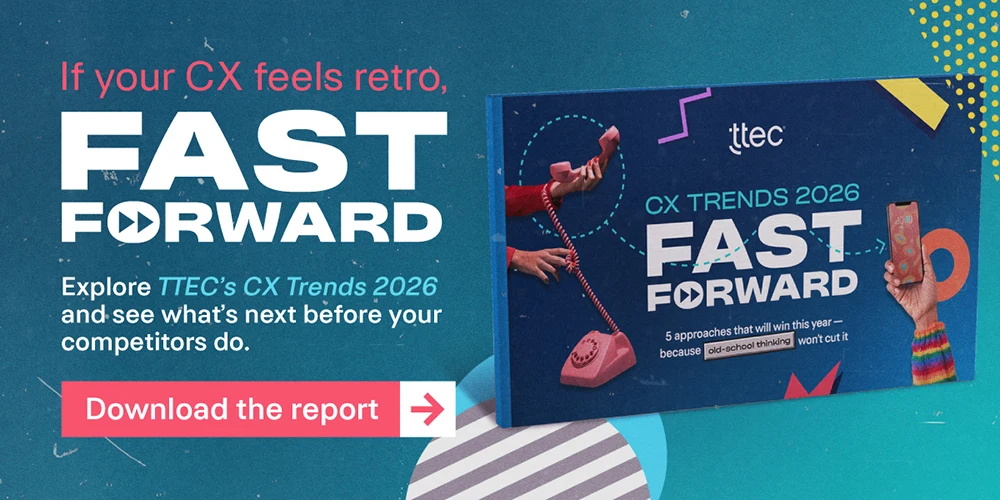Return merchandise authorization (RMA) interactions can be fraught. Customers are frustrated from the outset – since they’re dealing with a defective, broken, or incorrect product – and they expect speedy resolutions.
Complicating things further, RMAs involve many necessary steps: customers must contact the brand and provide documentation of product ownership and the problem, back-office must review customers’ requests to approve or deny them, items must be shipped back to the company, and returned products must be inspected.
In TTEC’s work with tech brands to manage repairs, replacements, and refunds, we see firsthand that RMA often is a manual and cumbersome process that frustrates customers and associates alike and is ripe for fraud. But it doesn’t have to be.
With the right technology and AI-powered insights, brands can deliver seamless and proactive support that transforms RMAs from potential relationship busters to loyalty builders.
1. Leverage automation where it makes sense
Too often, the RMA process gets bogged down by manual tasks. Supporting documentation tends to be paper-based or email-driven, which creates delays, increases the chances of errors, and frustrates customers.
Relying on a manual process also results in higher labor costs and longer turnaround times. Explore where automation can speed up parts of the process without sacrificing quality or customer experience (CX).
Back-office tasks could be a prime opportunity for intelligent automation, since they play a critical role in RMAs. Back-office teams are usually tasked with verifying certain aspects of claims, and ultimately approving or rejecting them, so consider whether any of their repetitive and routine tasks can be automated.
Certain aspects of RMA will always require review and action by humans, but automated tools can help generate, track, and manage claims. When exploring solutions, seek ones that can easily integrate with CRMs and inventory platforms to streamline workflows.
When simple tasks are delegated to automation, associates can focus on more-nuanced interactions where they’ll have a greater impact.
An added benefit of automation: it lets brands collect data they can feed into AI-powered insights tools to identify patterns and trends. This provides real-time visibility into what’s happening in the contact center and can drive data-backed decision-making to improve CX and employee experience.
2. Fight fraud with AI-powered tools
RMA processes are increasingly vulnerable to fraud, especially when visibility and controls are limited. Fraud puts companies at risk for financial loss, operational disruption, and damage to brand reputation.
As technology evolves, so do the methods used to exploit weak points in return and warranty processes. That’s why proactive fraud detection—through data validation, centralized case tracking, and intelligent workflows—is essential to maintaining the integrity of your RMA operations.
With intelligent fraud automation, brands can go a step beyond quickly responding to fraud when it happens; they can pre-emptively stop it before it starts. AI-powered anti-fraud technology provides always-on monitoring and analyzes data to find patterns and anomalies.
AI can comb through large volumes of data and learn which types of interactions are most vulnerable to fraud, detect suspicious patterns, and identify how and when fraud typically happens for a brand.
With these AI-powered insights in hand, fraud investigators can cull actionable insights and determine the best next steps. Instead of reactively scrambling in the aftermath of fraud events, companies can proactively anticipate when fraud is likely to occur and stop it in its tracks.
At TTEC, we’ve seen the powerful combination of AI-powered fraud detection and human fraud investigators result in a 75% drop in fraud instances, the recovery of more than 40,000 accounts that had been taken over, and a 66% reduction in manual work.
3. Tap into a global workforce
Even with the best insights and automation at your fingertips, associates will always play an essential role. Associates handling RMA, in particular, need a unique set of skills; they must know how to deliver quick and empathetic support, possess some technical know-how, and understand how to spot potential fraud.
Finding associates with the right skillset can be daunting, costly, and time-consuming. Consider putting your workforce in expert hands. Working with a CX partner that specializes in RMA is a great way to tap into a global workforce that is ready to hit the ground running.
Offshore and nearshore options – including Bulgaria, India, Mexico, and the Philippines – offer highly trained and digitally savvy workforces that deliver exceptional, multilingual CX at significant cost savings.
A good outsourcing partner can easily navigate demand peaks and valleys, ramping support teams up and down to meet the changing needs of your business. And an outsourcing partner also brings the cutting-edge technology, proven best practices, and strategies you need to improve satisfaction and grow loyalty.
With your RMA-related CX entrusted to proven experts, you can focus on what your brand does best: providing high-quality technology that keeps customers coming back.















